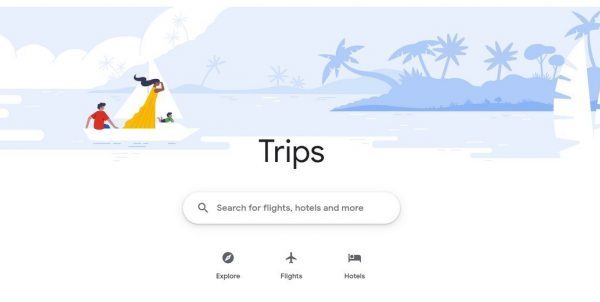Traffic isn’t great, online sales are even worse, and let’s not talk about the lack of phone calls.
Everyone, including you, is wondering the same thing — is your website a failure? Not yet, and not if you have anything to say about it. While a failing website can seem like a problem without a solution, that’s not the case.
Plenty of factors can cause website failure, from a slow speed to poor design, but rest assured — your website isn’t past the point of no return. Whether with the help of your design and development team or the assistance of an agency that specializes in website failure, you can bring your website back to its former glory.
Are you ready to fix your site? Keep reading to learn about the three factors behind a failing website and how to make them nonexistent. Plus, see three real-life examples from companies like Target and Myspace.
If you need to chat one-on-one about your site’s troubles, contact us online or call us at 888-601-5953!
1. Your website isn’t fast
A slow site is one of the top reasons websites fail. Go ahead and check your site’s speed (for free!) now.
Why can a slow site cause website failure?
No matter your industry, product, or service, a slow website can prove deadly to your website’s success.
Why?
People don’t want to wait for your page or site to load. They’re on a mission to get something done, whether it’s researching a topic, comparing service prices, or finding a new recipe for tonight’s dinner. They want answers, and they want them now.
That’s why more than 50% of users abandon sites that load after more than three seconds.

If your website’s speed is more than three seconds (or even two, as most users expect sites to load in two seconds), you may have found the cause behind your website’s failure. Give your site the best chance at success by prioritizing a fix for this problem.
Companies that make page speed a priority can experience a range of benefits.
A business that increases its site speed by one second, for example, increases its conversions by seven percent. Even better, they experience longer sessions, meaning people spend more time on the company’s website.
How do I make my website faster?
Creating a faster website includes several different solutions and approaches, including:
- Compressing site images with a tool like Squoosh or Kraken
- Minifying code like JavaScript, HTML, and CSS by removing unnecessary characters, like commas
- Reducing the number of redirects or 301s
- Using browser caching to decrease how often browsers need to reload your pages
- Improving server response times by fixing performance bottlenecks
- And more
In most cases, you will need the help of a developer to implement these changes.
While you can probably compress site images with ease, optimizing code may prove challenging without a developer background. If you don’t have an internal development team, you can invest in page speed optimization services, which help your business maintain a fast site.
2. Your website isn’t easy to use
Sites can also flop because they’re confusing and frustrating for people to use.
Why can a hard-to-use site cause website failure?
A hard-to-use site can result in website failure for a few reasons, including:
- People can’t view or find the information they need
- People can’t take the actions they want
- People can’t access your site
Essentially, a poorly designed site prevents users from doing what they (and you) want.

When it comes to web design, you want to provide a seamless customer experience. People should move from one page to another with ease. They shouldn’t have to think about what they need to do because your website provides an intuitive experience.
A few web design elements that can lead to poor usability and frustrating user experiences include:
- Navigation menus
- Typography
- Clickable elements
- Layout
- Color palette
For perspective on the impact of poor usability on your website’s performance, consider this fact: Almost 90% of users shop with a competitor after a poor user experience. It’s no surprise, then, that usability is one of the top reasons for website failure.
How do I make my website easier to use?
If you want to make your website a place that users and web designers love, take the following steps:
- Ask friends, family members, and coworkers to complete a task on your site
- Monitor their actions (and reactions) as they try to complete the task
- Request feedback on your site’s look, as well as what made the task difficult
Next, compile all that feedback and look for similarities.
For example, did almost everyone comment on how the text was difficult to read, because of its color? Or, did they mention that the navigation was unexpected in its organization, which made the task challenging?
With this feedback, you can work with your design and development team to come up with some fixes.
A few examples of some changes to improve your website and prevent website failure include:
- Making the navigation bar consistent in its location and organization
- Updating your website copy for clarity
- Tweaking the site color palette for readability
- Changing the website layout for improved usability
- Creating a responsive design so that your site displays on all devices correctly
If you have questions about how to improve your site’s ease of use, you can always work with a web design agency. These agencies, like WebFX, specialize in web design and can help you develop a site that gives users the best experience possible.
3. Your website isn’t optimized for SEO
Sites without search engine optimization (SEO) can fail too. Does your website use SEO? Check now!
Why can an unoptimized site cause website failure?
When you’re planning to buy something, where do you go? The Internet, most likely.
Whether you head to Amazon, Google, or Facebook, you use the Internet to research your options, compare prices, and (in some cases) make your purchase. Studies show that around 80% of people do their product research online.
The Internet, however, features more than 1.9 billion websites.
How can people that have never heard of your business, products, or services, find you? Search engines.
Search engines, like Google or Bing, offer your company a way to get noticed by people in your target market. That’s because search engines compile a list of search results, which feature websites from across the web.

If your site appears in those results, you have the chance to connect with your audience.
Appearing in search results, however, doesn’t guarantee a fix for website failure. You need to appear on the first page of results for the most impact because most users stick to the first page. For example, only 25% of users go to the second page of results.

How can your company earn a top spot in search results? With SEO.
SEO optimizes your website for search engines, as well as users. While it includes several technical and non-technical strategies, SEO maintains a simple and straightforward goal: Provide a fast and helpful experience to users.
Companies that don’t use SEO, however, place themselves at risk for website failure.
People can’t find your site, so your site doesn’t earn traffic, leads, or sales. This problem can become worse if you have a slow and poorly designed website because search engines like Google use speed and user behavior as ranking factors.
You can check and see if your site uses SEO (and how well) with a free SEO checker.
How do I make my website SEO-friendly?
While creating an SEO-friendly website can serve as one of the most challenging fixes for a failing website, it also offers the biggest impact. You can improve not only your position in search results but also increase critical company numbers like sales and revenue.
If you want to optimize your website for SEO, review the basics of SEO, from keywords to title tags.
Once you learn the basics of SEO, you can move forward with your SEO strategy. Start by auditing your website, whether manually, professionally, or with an SEO checker. Your audit will provide the foundation for your SEO plan.
Every SEO plan is different, but they all include a focus on the following factors:
You can also partner with an SEO agency if your team doesn’t have the resources or time to dedicate to SEO. Via the agency’s SEO services, your company can optimize its site, prevent website failure, and improve its revenue.
3 examples of website failure from companies you know
Curious about some other reasons websites fail? Check out these three real-life examples:
1. Healthcare.gov

The launch of HealthCare.gov, which opened the U.S. Health Insurance Marketplace, experienced several problems. From failed security features to unsuccessful logins, the website was far from successful at its launch. Now, though, users can count on the site to perform.
2. Myspace

While one of the world’s first social media networks launched without issue, its later management turned the website into a brief failure. Due to some developmental missteps, Myspace was vulnerable to phishing, malware, and spam, which harmed its market value and long-term popularity.
3. Target

Target also experienced a moment as a website failure. Upon launching its Missoni Collection, the website crashed and experienced a second crash six weeks later. Not to mention, site security missteps led to the company paying $18.5 million in settlement fees.
Afraid your website is failing? Save it today.
If you’re worried that you have a failed website, you can change that.
With WebFX, an award-winning full-service digital marketing agency, your business can receive the support and services you need to turn your website into a success. Discover how our services, from SEO to page speed optimization, can help by contacting us online or calling us at 888-601-5953 today!
https://www.webfx.com/blog/web-design/website-failure/




